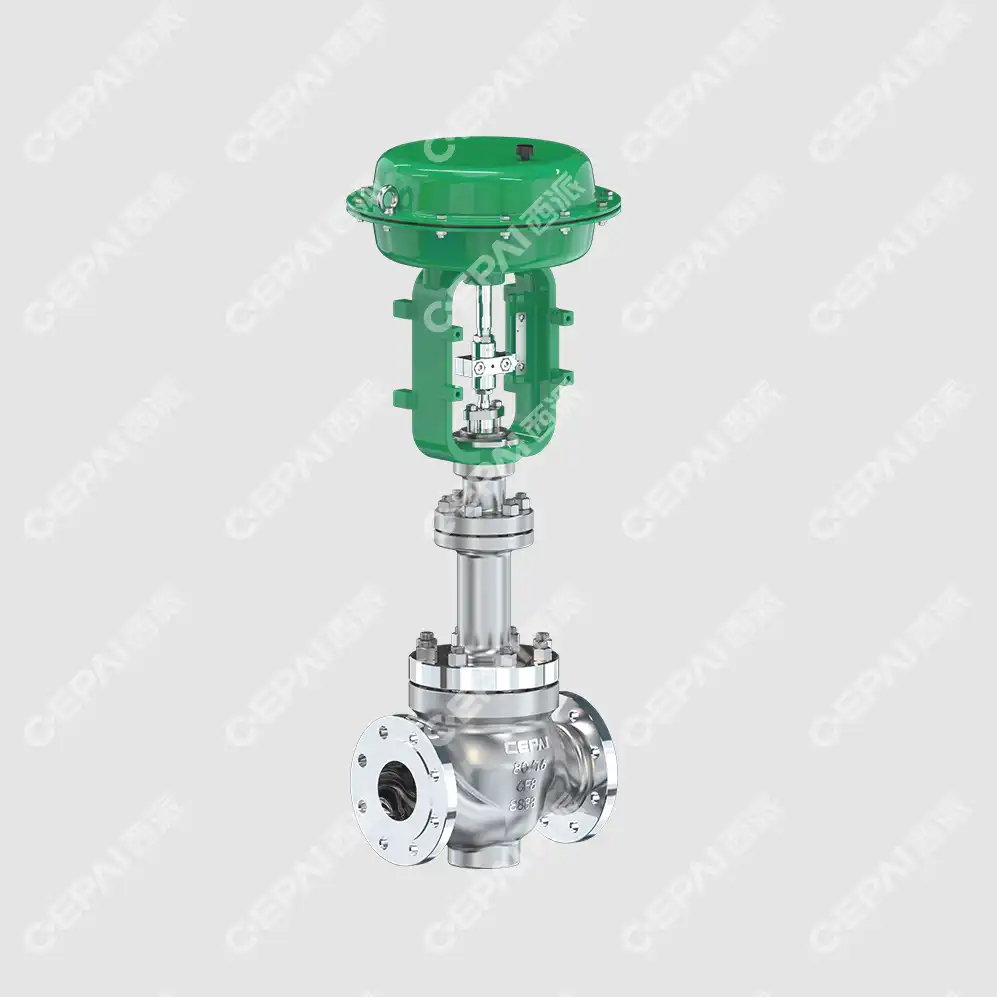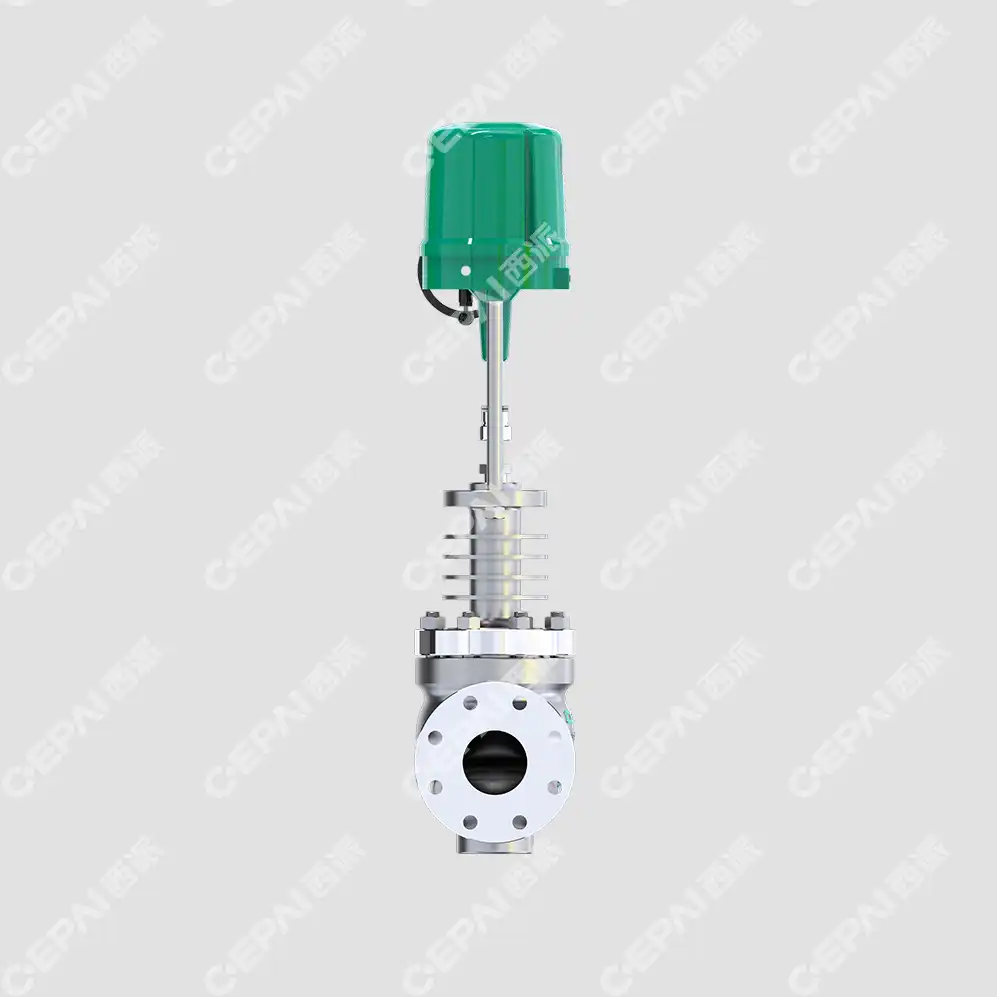Understanding Control Valve Basics and Types
Fundamental Principles of Control Valves
Control valves are mechanical devices designed to regulate the flow of fluids in a system. They operate by adjusting the size of a flow passage in response to signals from controllers. The primary function of a control valve is to manipulate a flowing fluid, such as a gas, steam, water, or chemical compound, to compensate for the load disturbance and keep the regulated process variable as close as possible to the desired set point.
These valves consist of three main components: the valve body, which houses the internal parts and connects to the pipeline; the trim, which includes the plug, seat, and cage that control the flow; and the actuator, which provides the motive power to operate the valve. The actuator receives signals from the control system and adjusts the valve position accordingly, allowing for precise control of the process variables.
Common Types of Control Valves
There are several types of control valves, each designed for specific applications and operating conditions. Globe valves are widely used due to their versatility and excellent throttling capabilities. They are suitable for a wide range of pressures and temperatures, making them ideal for many industrial processes.
Ball valves offer quick shutoff and high flow capacity, making them popular in oil and gas applications. Butterfly valves are lightweight and compact, providing good throttling performance in large diameter pipes. Diaphragm valves are excellent for handling corrosive or abrasive fluids, while pinch valves are ideal for slurry applications.
Angle valves are designed for applications where the flow changes direction, such as in boiler feed systems. Rotary valves, including eccentric plug valves and segmented ball valves, offer good control characteristics and are suitable for high-pressure applications.
Selecting the Right Control Valve for Your Application
Choosing the appropriate control valve requires careful consideration of various factors. The process fluid's characteristics, including viscosity, temperature, and corrosiveness, play a crucial role in valve selection. Operating conditions such as pressure drop, flow rate, and rangeability must also be taken into account.
The valve's size and capacity should be properly calculated to ensure optimal performance. Consideration should be given to the valve's material of construction to ensure compatibility with the process fluid and operating environment. The type of actuator and control system integration are also important factors in selecting the right control valve for a specific application.
Control Valve Components and Working Mechanisms
Anatomy of a Control Valve
A control valve's anatomy consists of several key components that work together to regulate flow. The valve body is the main structure that houses the internal parts and connects to the piping system. The bonnet is attached to the body and provides a sealing surface for the packing, which prevents leakage around the valve stem.
The trim components, including the plug, seat, and cage, are responsible for controlling the flow through the valve. The plug moves up and down to vary the flow area, while the seat provides a sealing surface when the valve is closed. The cage guides the plug and can be designed with specific flow characteristics.
The actuator, mounted on top of the valve body, provides the motive force to position the valve. It can be pneumatic, hydraulic, or electric, depending on the application requirements. The positioner ensures accurate valve positioning by comparing the desired position with the actual position and making necessary adjustments.

Control Valve Characteristics and Flow Coefficients
Control valves characteristics refer to the relationship between the control valves opening and the flow rate through the control valves. The most common characteristics are linear, equal percentage, and quick opening. Linear characteristics provide a proportional change in flow rate for a given change in control valves position. Equal percentage characteristics offer more precise control at lower flow rates, while quick opening characteristics provide rapid changes in flow at small control valves openings.
The flow coefficient (Cv) is a crucial parameter in control valves sizing. It represents the flow capacity of the control valves and is defined as the number of gallons per minute of water that will flow through the control valves with a pressure drop of 1 psi. Understanding and correctly applying flow coefficients is essential for proper control valves sizing and selection.
Advanced Control Valve Technologies and Innovations
The field of control valve technology is constantly evolving, with new innovations enhancing performance and reliability. Smart positioners equipped with microprocessors offer advanced diagnostics and communication capabilities, allowing for predictive maintenance and improved process control. Digital valve controllers enable precise positioning and can integrate seamlessly with modern control systems.
Advanced materials and coatings are being developed to improve valve durability and resistance to erosion, corrosion, and cavitation. These innovations extend valve life and reduce maintenance requirements in challenging applications. Noise reduction technologies, such as multi-stage trim designs and advanced flow path geometries, are addressing environmental concerns and improving worker safety in high-pressure applications.
Applications and Best Practices in Control Valve Implementation
Control Valves in Various Industries
Control valves find applications across a wide range of industries, each with its unique requirements. In the oil and gas industry, they are used in wellhead control, pipeline systems, and processing facilities to regulate flow and pressure. The chemical industry relies on control valves for precise control of reactants and products in various processes.
In power generation, control valves play a critical role in regulating steam flow in turbines and managing feedwater systems. The water and wastewater treatment industry uses control valves for flow control, pressure regulation, and level control in treatment processes. In the food and beverage industry, sanitary control valves ensure precise control of ingredients and maintain product quality.
The pharmaceutical industry employs control valves in various stages of drug manufacturing, including reactor vessels, separation processes, and packaging lines. In the pulp and paper industry, control valves regulate steam, water, and chemical flows throughout the production process.
Maintenance and Troubleshooting of Control Valves
Proper maintenance is essential for ensuring the longevity and reliability of control valves. Regular inspection and preventive maintenance schedules should be established based on the valve's criticality and operating conditions. This includes checking for leaks, inspecting packing and gaskets, and verifying proper actuator operation.
Calibration of positioners and instrumentation should be performed periodically to maintain accurate control. Lubrication of moving parts and cleaning of internal components may be necessary depending on the application. When troubleshooting control valve issues, common problems to look for include sticking or binding, improper sizing, and worn or damaged trim components.
Advanced diagnostic tools and software can help identify potential issues before they lead to valve failure. Vibration analysis, acoustic monitoring, and performance signature analysis are some techniques used for predictive maintenance of control valves.
Optimizing Control Valve Performance for Efficiency and Safety
Optimizing control valve performance is crucial for maximizing process efficiency and ensuring safety. Proper valve sizing and selection are fundamental to achieving optimal performance. Undersized valves may not provide adequate flow control, while oversized valves can lead to poor control and excessive wear.
Implementing advanced control strategies, such as cascade control or feedforward control, can improve overall system performance. Tuning of control loops is essential for achieving stable and responsive control. This may involve adjusting PID controller parameters or implementing more advanced control algorithms.
Safety considerations are paramount in control valve applications. Proper selection and implementation of safety instrumented systems (SIS) and emergency shutdown valves (ESV) are critical for protecting personnel and equipment. Regular testing and validation of safety systems should be performed to ensure their reliability in emergency situations.

Conclusion
Control valves are indispensable components in modern industrial processes, offering precise regulation of flow, pressure, and other critical variables. This comprehensive guide has explored the fundamental principles, types, and applications of control valves, highlighting their importance across various industries. By understanding the intricacies of control valve selection, maintenance, and optimization, industry professionals can enhance their operations, improve safety measures, and drive efficiency in their processes. As technology continues to advance, the future of control valves promises even greater precision, reliability, and integration with smart manufacturing systems.
Contact Us
Are you looking to optimize your industrial processes with high-quality control valves? CEPAI Group offers a wide range of cutting-edge control valve solutions tailored to your specific needs. Our expert team can help you select, implement, and maintain the perfect control valves for your application, ensuring maximum efficiency and reliability. Contact us today at cepai@cepai.com to learn how we can elevate your operations with our advanced control valve technology.

_1746598525968.webp)



